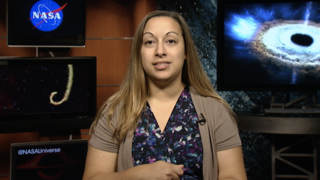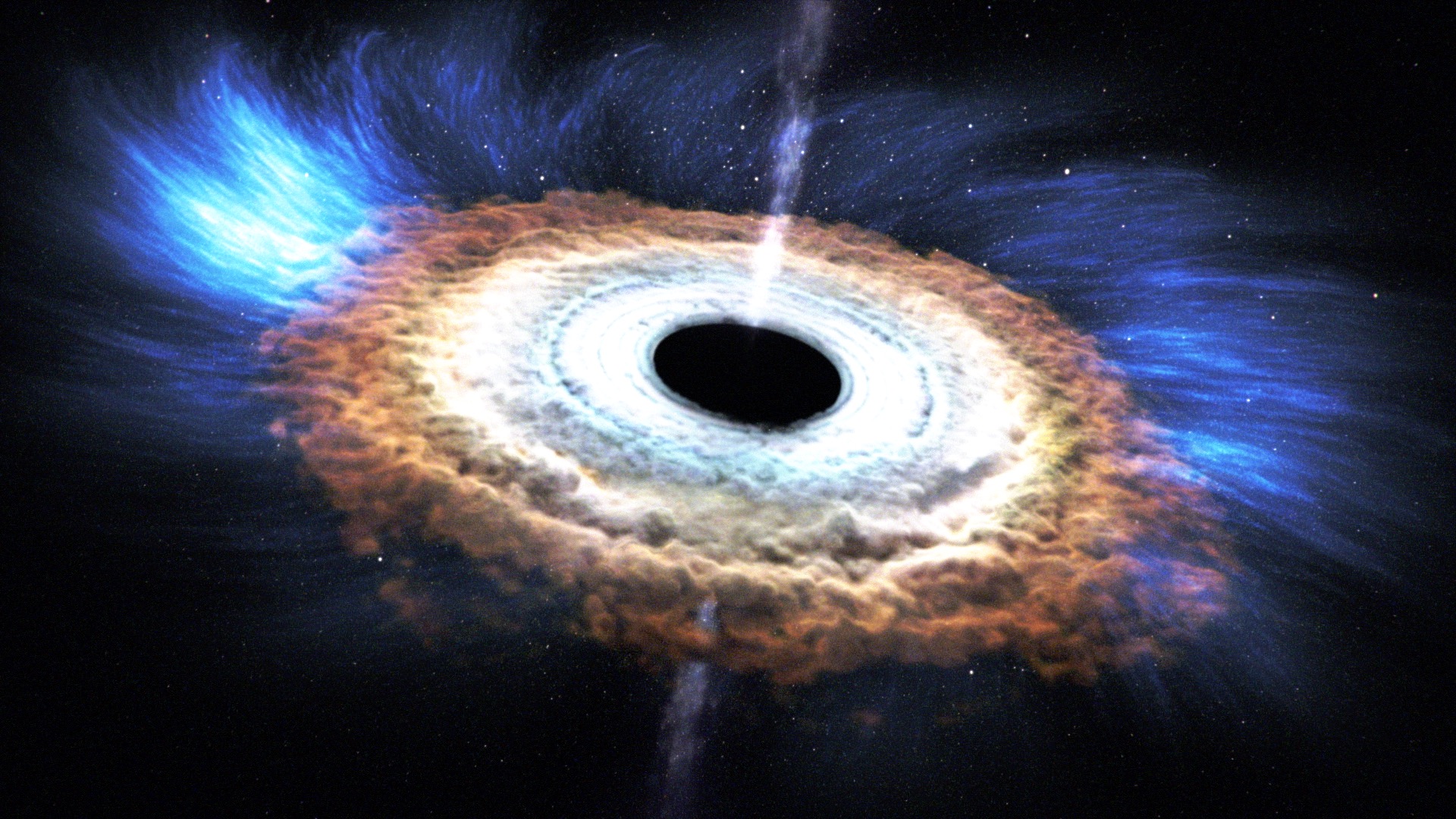Swift Charts a Star's 'Death Spiral' into Black Hole
This animation illustrates how debris from a tidally disrupted star collides with itself, creating shock waves that emit ultraviolet and optical light far from the black hole. According to Swift observations of ASASSN-14li, these clumps took about a month to fall back to the black hole, where they produced changes in the X-ray emission that correlated with the earlier UV and optical changes.
Credit: NASA's Goddard Space Flight Center
Watch this video on the NASA.gov Video YouTube channel.
Some 290 million years ago, a star much like the sun wandered too close to the central black hole of its galaxy. Intense tides tore the star apart, which produced an eruption of optical, ultraviolet and X-ray light that first reached Earth in 2014. Now, a team of scientists using observations from NASA's Swift satellite have mapped out how and where these different wavelengths were produced in the event, named ASASSN-14li, as the shattered star's debris circled the black hole.
Astronomers discovered brightness changes in X-rays that occurred about a month after similar changes were observed in visible and UV light, which means the optical and UV emission arose far from the black hole, likely where elliptical streams of orbiting matter crashed into each other.
ASASSN-14li was discovered Nov. 22, 2014, in images obtained by the All Sky Automated Survey for SuperNovae (ASASSN), which includes robotic telescopes in Hawaii and Chile. Follow-up observations with Swift's X-ray and Ultraviolet/Optical telescopes began eight days later and continued every few days for the next nine months.
ASASSN-14li was produced when a sun-like star wandered too close to a 3-million-solar-mass black hole. A star grazing a black hole with 10,000 or more times the sun's mass experiences enormous tides that tear it into a stream of debris. Astronomers call this a tidal disruption event.
Matter falling toward a black hole collects into a spinning accretion disk, where it becomes compressed and heated before eventually spilling over the black hole's event horizon, the point beyond which nothing can escape and astronomers cannot observe. Tidal disruption flares carry important information about how this debris initially settles into an accretion disk.
4K UHD version. This animation illustrates how debris from a tidally disrupted star collides with itself, creating shock waves that emit ultraviolet and optical light far from the black hole. According to Swift observations of ASASSN-14li, these clumps took about a month to fall back to the black hole, where they produced changes in the X-ray emission that correlated with the earlier UV and optical changes.
Credit: NASA's Goddard Space Flight Center

This artist’s rendering shows the tidal disruption event named ASASSN-14li, where a star wandering too close to a 3-million-solar-mass black hole was torn apart. The debris gathered into an accretion disk around the black hole. New data from NASA's Swift satellite show that the initial formation of the disk was shaped by interactions among incoming and outgoing streams of tidal debris.
Credit: NASA's Goddard Space Flight Center
For More Information
Credits
Please give credit for this item to:
NASA's Goddard Space Flight Center. However, individual items should be credited as indicated above.
-
Producer
- Scott Wiessinger (USRA)
-
Animator
- Scott Wiessinger (USRA)
-
Science writer
- Francis Reddy (Syneren Technologies)
Release date
This page was originally published on Monday, March 20, 2017.
This page was last updated on Sunday, October 6, 2024 at 11:41 PM EDT.

